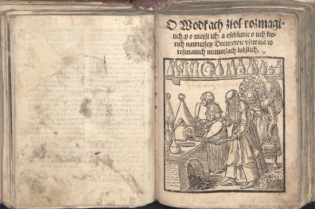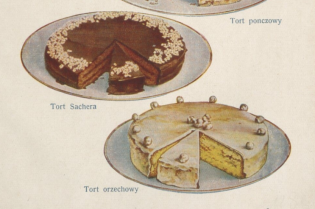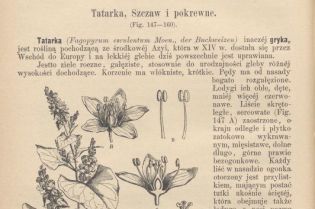Products from the Malopolska Region with a Protected Designation of Origin
There are 42 products on the list of Polish names registered in the EU system of Protected Designations of Origin and Protected Geographical Indications as well as Traditional Specialties Guaranteed. Many of them are specialties reported by Malopolska Region manufacturers.
Products from the Malopolska Region with a Protected Designation of Origin
In 1992, the European Union provided special protection for manufacturers (oftentimes small ones) producing food related to the culinary tradition or characteristics of the place where it is made. In order to make them stand out, a European labeling system was created to emphasize the high quality of the products and protect producers against unfair competitors.
There are two categories of products: regional products of known origin covered by the Protected Designation of Origin and Protected Geographical Indication and traditional products covered by the designation, Traditional Specialty Guaranteed.
From among regional products, as many as 13 are manufactured in the Malopolska Region: Podhale Bryndza (a soft cheese), Piękny Jaś (beans from the Dunajec Valley), Zator carp, Oscypek smoked cheese, redykołka (a type of cheese), Prądnicki bread, Łącko apples, Podhale lamb, Lisiecka sausage, Krakowski Obwarzanek (round shaped bread)), Sechlońska suska (dried and smoked prunes from Sechna), Kiełbasa piaszczańska (Piaszczanska saussage) and Galician garlic.
The Protected Designation of Origin (PDO) is a European mark awarded to regional products of exceptional quality, with a name referring to the place where it is manufactured and emphasizing their relationship with this place. All raw materials needed to manufacture such a product come from a specific geographical area and all production phases take place in that area. The PDO designation is found on the following 9 Polish products: Podhale Bryndza, Piękny Jaś beans from the Dunajec Valley, Wrzawa beans (beans from Wrzawy), Zator carp, honey from the Sejneńszczyzna/Łoździejszczyzna area, Oscypek cheese, Podkarpacie honeydew honey, redykołka cheese and sour cherries from along the Vistula river.
The Protected Geographical Indication (PGI) is a European mark awarded to regional products of exceptional quality, with a name referring to the place where it is manufactured and emphasizing their relationship with this place. The PGI designation also indicates that at least one stage in the product's development must take place in the area to which its name refers. So far, 23 products have been distinguished in Poland with the PGI designation: Kalisz wafers, Lublin cebularz (bread with onions and poppy seeds), Prądnicki bread, Korczyn beans, Grójec apples, Łącko apples, Podhale lamb, Lisiecka sausage, Kołocz śląski (Silesian cake), Drahim honey, Kurpie honey, Bory Dolnośląskie heather honey, Krakowski Obwarzanek, St. Martin's croissant, homemade Korycin cheese, Sechlońska suska (dried and smoked prunes from Sechna), Szydłów plums, Kashubian strawberries /kaszëbskô malëna, Wielkopolska fried cheese, Silesian krupniok sausage, steamed Wielkopolska white sausage, Piaszczanska saussage, Galician garlic.
Traditional Specialities Guaranteed (TSG) is a European mark of quality awarded to products bearing a traditional name, referring to its specific character or traditionally used for this product. A product with the TSG mark must be made from traditional raw materials, according to a traditional recipe handed down from generation to generation or by traditional methods. To date, 10 products have been awarded the TSG mark in Poland: półtorak mead, dwójniak mead, trójniak mead, czwórniak mead, kabanosy (long dried sausage), juniper sausage, hunter’s sausage, rydzowy oil, pierekaczewnik pie, and Krakowska (dried pork Polish sausage).
Products from the Malopolska Region with a Protected Designation of Origin
Podhale Bryndza
Podhale Bryndza is a soft rennet cheese with a white, cream-white or light aquamarine shade. The taste of Bryndza is salty and spicy, sometimes very spicy, it can also be slightly acidic. The milk comes from sheep of the Polish Mountain sheep breed (4 to 6 liters are needed for 1 kg of the cheese), possibly with an admixture of milk from the Polish Red cow breed cow (cow's milk content may not exceed 40 percent).
Bryndza (the name comes from the Romanian word "brinze", meaning cheese) is produced from May to September. Sheep are milked two or three times a day. Milk is treated with rennet to make it curdle. When the cheese mass separates from the whey, it must be mashed with a special wooden spatula with a wire. When the cheese lumps drop to the bottom of the barrel, the cheese is kneaded by hand and laid in a cloth, which is then hung on the wall of a shepherd's hut. When the cheese drains completely, it goes to the shelf, where it ripens for 4-12 days. The product that is produced as a result of fermentation is so-called bundz (or bunc). In order for it to turn into a Podhale Bryndza, it must be mashed once again and kneaded with salt - until a smooth, uniform mass is formed. The cheese has no specific shape, it depends on the form of the packaging.
The Bryndza recipe came to our lands together with Wallachian shepherds (ancestors of today's Romanians). The oldest mentions of the cheese from Podhale come from the beginning of the 15th century and appear in the location documents of the village of Ochotnica in Gorce. In 1416, a location privilege was granted to Dawid Wołoch, who was also obliged to pay part of his tribute in cheese. Specifically, by name, Bryndza is mentioned - also as a means of payment - in the official Krakow magazines from 1527. Podhale Bryndza was the first Polish product to be entered in the EU register as a Protected Designation of Origin, which took place on June 12, 2007. Production takes place in a strictly defined area called Podhale in the Nowy Targ, Tatra districts and six municipalities of the Żywiec poviat: Milówka, Węgierska Górka, Rajcza, Ujsoła, Jeleśnia and Koszarawa.
Piękny Jaś beans from the Dunajec Valley
Piękny Jaś beans from the Dunajec valley taste sweet and their consistency is extremely delicate. The beans also have a thin skin, so it cooks 10 minutes shorter than other "jaś" beans, it also has a higher magnesium content. Only farmers cultivating it in the area of 11 municipalities in the Dunajec river valley can be granted the right to produce beans with the PDO designation: Gródek nad Dunajcem (Nowy Sącz powiat), Zakliczyn, Wojnicz, Wierzchosławice, Radłów, Wietrzychowice, Tarnów, Pleśna, Żabno (Tarnów powiat), Czchów (Brest powiat) and Gręboszów (Dąbrowa powiat) in the Malopolska Region.
Zator carp
Zator carp is produced in three municipalities: Zator, Przeciszów and Spytkowice. The Zator carp was reared after crossing the native Polish (Galician) carp line and the pure Hungarian, Yugoslav, Goły and Israeli breeds. The distinguishing marks of the Zator carp are a well-defined back, compact shape and olive or olive-blue color. The carp owes its unique taste to the original two-year system of rearing in ground ponds.
The beginnings of carp breeding in Zator near Wadowice date back to the reign of Bolesław Krzywousty (1086-1138). However, the first written references about the Zator carp were found in the chronicles of Jan Długosz (1415-1480).
Oscypek
Oscypek is a smoked sheep cheese made in Podhale. It is made by hand from the sheep's milk of Polish Mountain sheep, sometimes with a small admixture of milk from the Polish Red cow and produced from May to September. The milk is left for a few hours for light acidification and mixed with fresh milk in a copper "koltik" hung above the hearth in a shepherd's hut. Then the so-called "klag", dried rennet, is added to the milk. The curdled mass is mashed with a wooden spatula, called a ferrule, then some hot water is added so that the curd pieces stick together and fall to the bottom. The cheese mass must be squeezed out of the whey and formed into a characteristic spindle, and then the pattern is pressed on the cheese using a wooden ring. The formed cheese is soaked in brine for 24 hours, then smoked in cool smoke for a few to up to ten or more days.
The first mention of the production of Oscypek comes from the 15th century: found in the location documents of the village of Ochotnica in Gorce. And a detailed description of how to manufacture it was included in the instructions of the Ślemieński state in the Żywiec region in 1748. This original recipe has not changed until today.
Oscypek can be produced in the Silesian and Malopolska regions, specifically in the municipality of the Cieszyn powiat (Istebna), in the municipalities of the Żywiec poviat (in Milówka, Węgierska Górka, Rajcze, Ujsoły, Jeleśnia, Koszarawa), throughout the Nowy Targ poviat and the Tatra poviat, in the municipalities of the Sucha Beskidzka powiat (Zawoja and Bystra Sidzina), in the municipalities of the Limanowa poviat (Niedźwiedz and part of the Kamienica municipality, located on the territory of the Gorczański National Park or located south of the Kamienica River and the village councils of the Mszana Dolna municipality: Olszówka, Raba Niżna, Łostówka, Łętowe and Lubomierz) and in the municipalities of the Nowy Sącz powiat (Piwniczna, Muszyna and Krynica).
Redykołka
Redykołka is a small cheese made of unpasteurized milk of the Polish Mountain sheep. The addition of cow's milk from Polish Red cow breed is allowed, however, not exceeding 40 percent of the total milk weight. The weight of redykołka cannot exceed 300 grams, but the smallest ones, having the shape of a spindle, weigh between 30 to 60 grams. Redykołka is produced in the period from May to September. The manufacturing process resembles the production of Oscypek (redykołka is also produced in the same area), except that the cheese is formed into other shapes and smoked for 3-7 days.
Redykołka owes its name to the fact that they were given out during the "retreating" or the return of sheep from grazing. They performed ritual functions. Shepherds offered them to their children or girls - always giving two. Although originally the cheeses were made of leftovers, which were not enough to press the Oscypek cheese, over time they became so popular that they became a product manufactured independently of other products.










